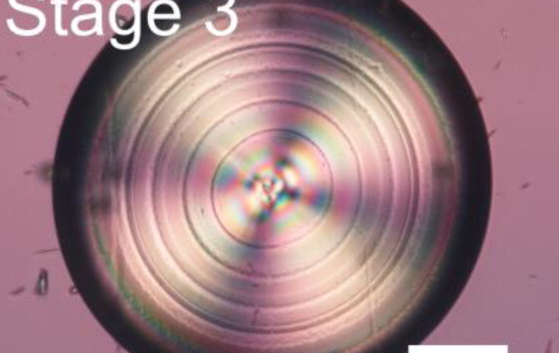Zhang, G.; Delgado-López, J. M.; Choquesillo-Lazarte, D.; García-Ruiz, J. M., Crystal Growth & Design 2015, 15 (2), 564-572.
Monohydrocalcite (CaCO3·H2O) has been crystallized in silica-rich alkaline water solution. The crystallization proceeds by a counterdiffusion method without the presence of any other additive except dissolved silica. The crystallization has been followed in situ by optical microscopy and Raman microspectroscopy, while the time evolution of the pH and the concentration of calcium and silica species in solution have also been followed either by in situ (pH) or ex-situ (calcium and silica) time-lapse analysis. The growth of monohydrocalcite particles occurs by different mechanisms that are related to the pH and the rate of pH change with time. The initial peanut-like crystal converts into an onion-like multilayered texture, which is built up by the alternation of loose layers and compact layers as a result of different levels of silica incorporation. A final silica-rich skin covers the hemisphere inhibiting the further growth of monohydrocalcite. When the silica skin fails to cover the whole surface of the hemisphere, a bulge of monohydrocalcite grows from the uncovered area until a new silica skin inhibits its growth except from a small uncovered area from which a new bulge forms. The iteration of this mechanism creates particles with caterpillar-like morphology. Our results show that silica plays a key role in the morphogenesis and texture of monohydrocalcite crystallization due to the coupled interaction between the reverse solubility of silica and carbonate versus pH.


